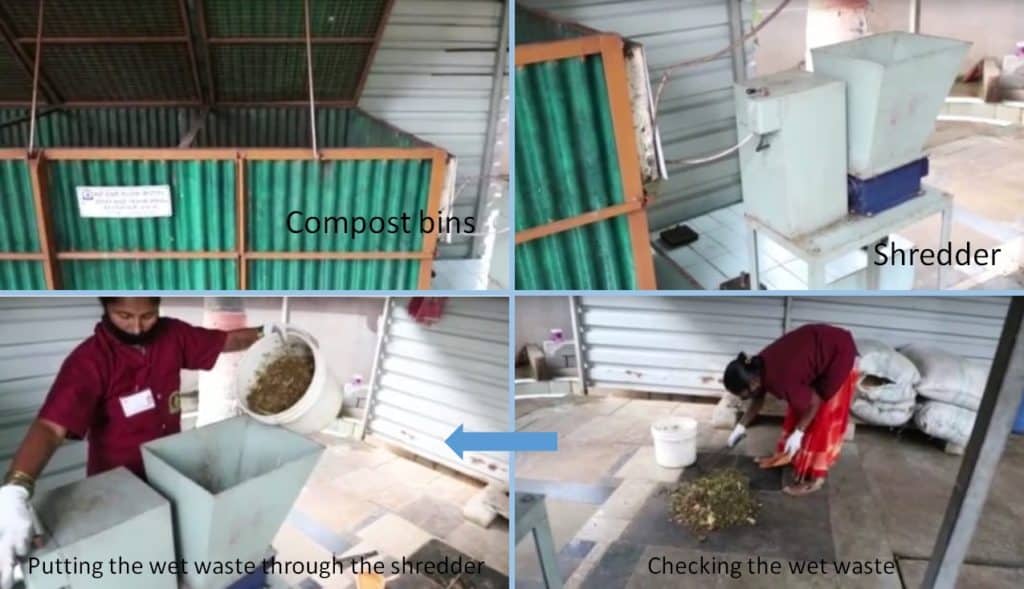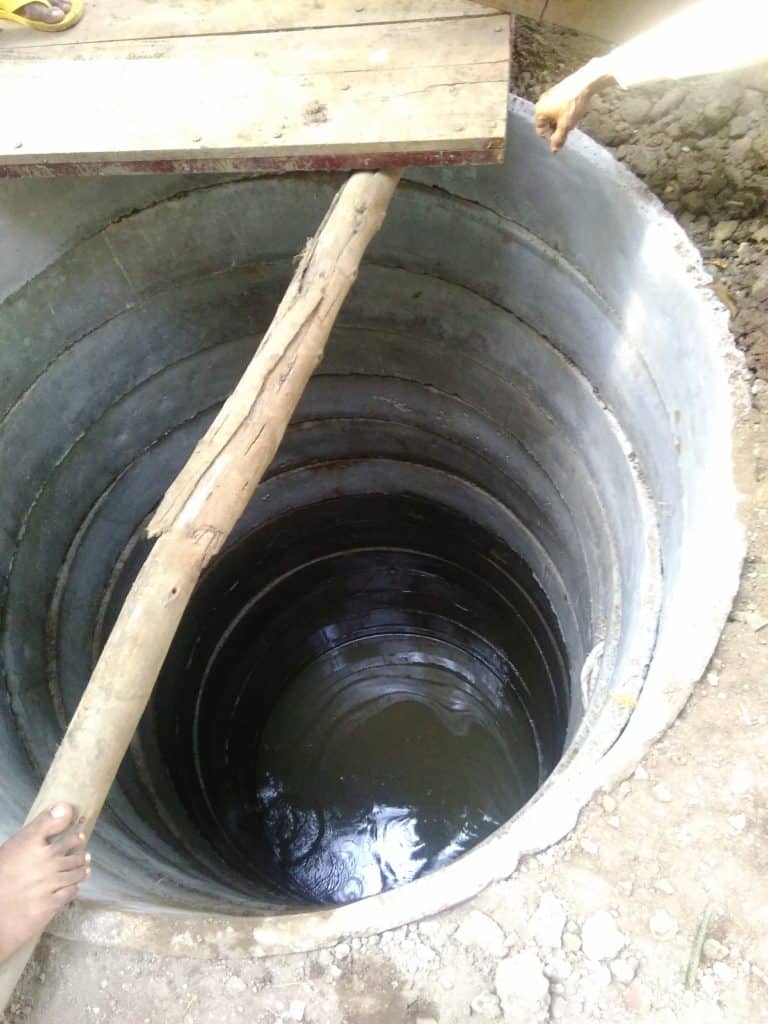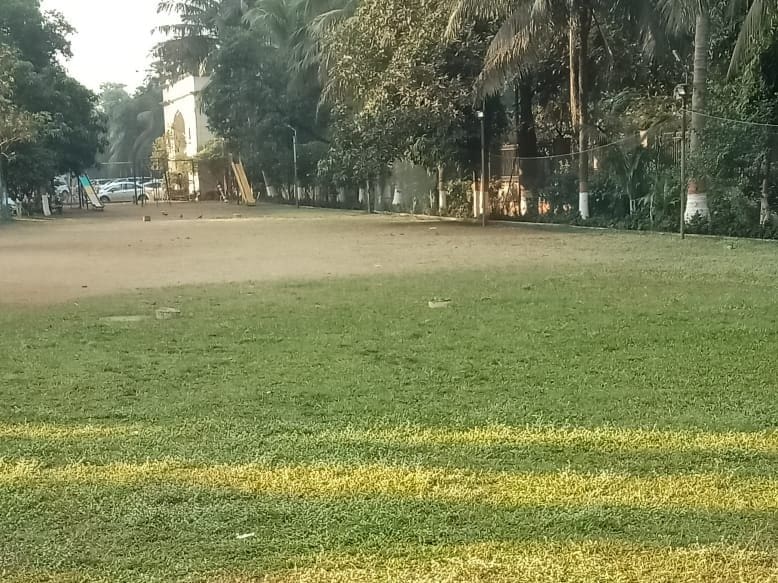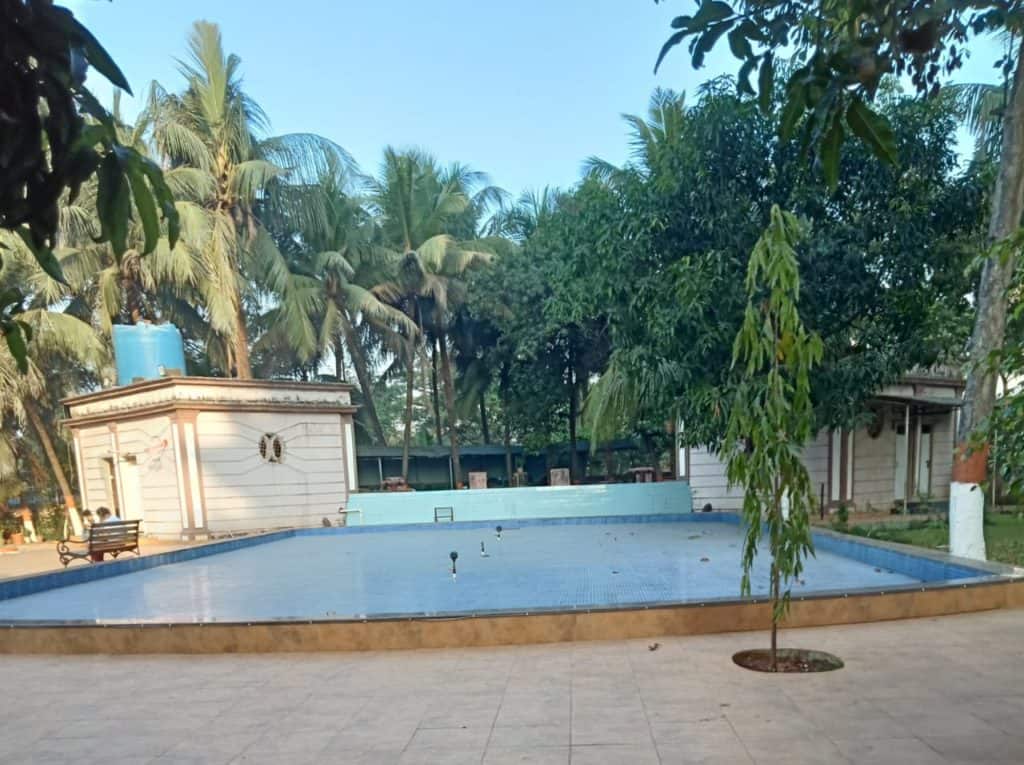Sea Breeze CHS Ltd is one of the oldest and largest societies along the iconic Palm Beach Road, in Sector 16, Nerul. The Society comprises of 10 towers with 28 flats in each, making it a total of 280 flats, with about 1000 residents.

In 2017, when the Swacch Bharat Misson began, Navi Mumbai Municipal Corporation (NMMC) mandated all housing societies with more than 200 flats to do complete segregation of waste at source – into wet and dry waste, and total in-house wet waste management.
The Managing Committee (MC) of the society decided to go full steam and adopt all the measures that would make the society compliant. We decided to go even beyond that, keeping in mind that this noble initiative of managing our own waste would take a huge burden off the crumbling environment.
How we went about segregation
At the first stage, all residents were asked to segregate their waste into wet, dry and reject waste as per the Waste Segregation Guide distributed to all households in the society. 2nd October is when we started.
Simultaneously, the housekeeping team was trained on how to collect the segregated waste separately for further processing.

Unsegregated waste would be left at the doorstep of the residents. Such households were told that they would need to manage the disposal by themselves. This was the method we adopted to ensure strict compliance.
Choosing a composting solution
The MC at the same time started the process of identifying a suitable wet waste processing system. The MC member in charge attended various meetings and exhibitions arranged by NMMC in this connection.
We came across many solutions, that were built on a range of technologies. We were looking for a solution that would be natural, environmentally friendly and one that would not be contrary to what we were setting out to achieve – reducing our carbon footprint.
We finally zeroed in on the composting bins solution offered by Stree Mukti Sangathana, an NGO that works for the emancipation of under privileged women. Its totally passive design, without any use of electricity in the actual composting was what drew us to this. We were told that shredding the waste before composting would help in speeding the composting process, so running the shredder for half an hour everyday would be the only electricity that would be used.
We needed a shelter to house the composting system. A composting shed was built for this purpose and we procured two bins from the vendor. Our composting started on 17th November 2017.
Initial teething problems and perseverance
There were many kinds of teething troubles in the first 6 months.
A little while after we began composting, we realised that the wet waste generated by the society was more than what the two bins could handle. So a third bin was added in Jan 2018.
The shredder came after a 2 month delay. This meant that we were dealing with larger volumes, leading to improper processing in the space we had.
The first monsoon in 2018 was a nightmare. The area was getting flooded repeatedly and the processed compost could not be dried properly.
Residents and neighbouring societies started complaining about the foul smell. We periodically appealed to the residents to be patient since this was a new venture, and kept highlighting the long term benefits. We took the help of NMMC officials to talk to the neighbours. We were under a lot of pressure but we decided that we must not give up.
Despite the foul smell which was rather inconvenient, we were given the chance to try a few things and trouble shoot and it was this support along with the determination and perseverance of the MC and staff that saw us through.
Finally things settled by about September 2018 – almost a year after we began. The three bins we had started processing 200-250 kg of wet waste per day, giving a yield of 600-800 kg of compost per month.

The composting infrastructure and steps

Using the compost
The compost generated is being used in the society’s extensive gardens comprising 100 coconut trees, 40 mango trees, 10 jack fruit trees and many flowering plants.
The quality of the compost is so good that residents buy the compost for their farms too.
The investment
The capital cost for setting up the composting units was approximately Rs 8 lakhs. This included 3 composting bins, shredder, shed and civil works and advisor assistance from the NGO.
The running cost is approximately Rs 16,000 per month. This includes consumables (culture, etc.) and payment to two ladies from the NGO who handle the composting.
The rewards
The satisfaction of not sending out wet waste is the biggest reward. Currently we are a Zero Wet Waste Society – not a single kilo of wet waste has been handed over to the NMMC waste pickup team in last 3 years.
Our efforts were further rewarded when the society was adjudged the “Second Cleanest Society” in Nerul Ward in Swachch Sarvekshan 2019.
From that point there was no looking back. Our society has always featured in the prize winners’ list of NMMC since then. In the 2020 Sarvekshan, we were adjudged as the “Third Cleanest Society” in entire Navi Mumbai district.
Our society has become the role model for neighbouring societies and for visiting officials of NMMC/MCGM and from Delhi for the Swachhata Abhiyan.
Future plans
We are aiming to become a totally Zero Waste Society where nothing is sent out to corporation dumping grounds. Towards this we are planning to do a few things:
– Source segregation of bio medical waste.
– Foot wear bank for collecting old and unused footwear from households and donate them to the poor and needy.
– Identification of a dry waste aggregator who can collect the dry waste from the society at periodic intervals.
– E-waste camps every 3-4 months. (We already held an e-waste camp in 2019 to dispose of nearly 500 kg of e-waste.)
– Plastic compactor installation in the society – to reprocess PET bottles.
Water saving initiatives by the society
The society has an old-fashioned ring well. The rainwater overflow from the society clubhouse terrace (nearly 6,000 square feet) is channeled into this well to recharge ground water. During the “Water Crisis Year of 2016”, the well yielded 8,000-10,000 litres of water that was used for gardening.

The society has a huge front lawn and mud ground (nearly 50,000 square feet). As it is not cemented, the rainwater falling on percolates the earth and serves as an excellent groundwater recharge point. The fountain area has a 3 lakh litre water tank below it, to store rain water for use.


We are working to get a dedicated STP line from NMMC – to bring treated sewage water to our premises to use for gardening purposes. Currently, the water is pumped into the Thane Creek by NMMC and goes to waste. Using the treated water for our gardens will save nearly 10,000 litres of potable water per day.
How the authorities can help us
As a socially responsible society we have made a small beginning to do our bit for the city and the world at large. We need more societies to adopt similar practices and this will help the city to manage its waste and water efficiently.
In addition to the various awards and cash incentives given to the society by NMMC that act as a motivating tonic, it would help in the long run if the NMMC were to give 5-10% rebate in our property tax and water bills.
Also read:
Proud of your untiring efforts!!! Keep up the good work ?
Good initiative Sridhar Hope every society follows this initiative. Then Navimumbai will really become green mumbai